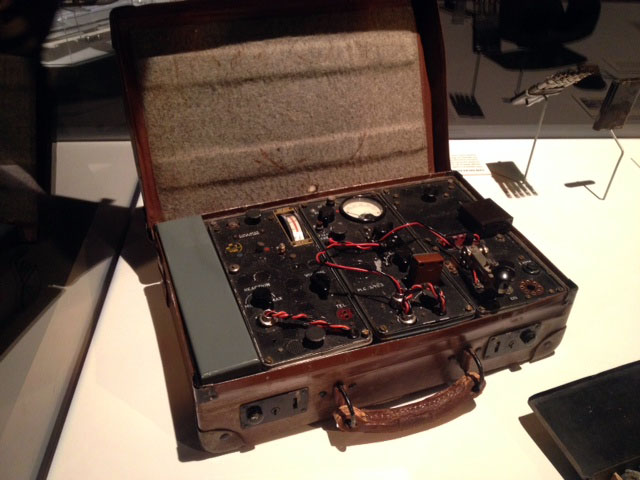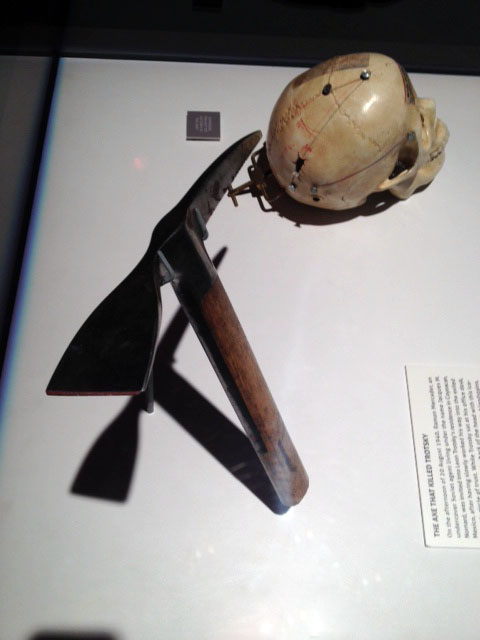 There is no James Bond in the exhibit Spy: The Secret World of Espionage, which runs through Sept. 1 at the Pacific Science Center. But that's okay — Spy doesn't need any of James Bond's kiss-kiss bang-bang cinematic flair. This exhibit has everything that is dangerous, mysterious and exciting about the real world of real spies.
There is no James Bond in the exhibit Spy: The Secret World of Espionage, which runs through Sept. 1 at the Pacific Science Center. But that's okay — Spy doesn't need any of James Bond's kiss-kiss bang-bang cinematic flair. This exhibit has everything that is dangerous, mysterious and exciting about the real world of real spies.
The exhibit begins with an immersive experience where you are introduced to the value of espionage through the words of U.S. presidents — starting with George Washington. From there you enter a series of galleries that starts with the Office of Special Services (OSS) in World War II and moves through the Soviet era and Berlin, spotlighting real spies and real-world spy scenarios.
The exhibit is threaded with interactive experiences related to espionage. Learn about secret codes by peering into a microscope to decode text no larger than the period at the end of this sentence. Create a disguise for yourself by taking a photo and then adding hats, wigs, glasses, mustaches and other concealing items. Step into a booth, record your voice and then distort it so you sound like someone else.
A particular standout (especially for younger visitors) is an actual laser security field. Unlike James Bond these lasers aren't intended to cut you in half but rather to form a maze of super-sensitive detectors. Your mission: cross the room without setting them off. It's fiendishly difficult, looks incredibly cool and is tremendously fun. (If Dad goes missing during your visit you'll know where to find him.)
What age for Spy?
Considering the deep sociopolitical context of much of the information and the way it is presented, this exhibit is probably best for kids ages 10 and up. (Younger kids will like interactive elements such as the laser maze or artifacts such as a camera strapped to a pigeon or the cockpit of an A-12 Oxcart supersonic spy plane but may find the presentation of much of the information a little tedious.)
 But for those who can understand the implications, the exhibit is packed with fascinating historical artifacts, including an actual German Enigma machine, the ice climbing axe that killed Leon Trotsky, a piece of Gary Powers' downed U2 spy plane, a Bulgarian Assassination Umbrella, KGB surveillance photos and a robotic dragonfly created by the CIA.
But for those who can understand the implications, the exhibit is packed with fascinating historical artifacts, including an actual German Enigma machine, the ice climbing axe that killed Leon Trotsky, a piece of Gary Powers' downed U2 spy plane, a Bulgarian Assassination Umbrella, KGB surveillance photos and a robotic dragonfly created by the CIA.
All of these items are used to illustrate and educate about some aspect of espionage, concealment, observation, information gathering and exchange, suppression, security, communication and so on.
Spies refer to these gadgets and tools as "tradecraft"; amid these, you'll also find many stories of patriotism, sacrifice and greed that bring a compelling human element to the exhibit.
You may feel sympathy for a Soviet spy executed for doing what he thought was the right thing, or contempt for an American spy who betrayed his country. As you go deeper into the exhibit and learn about programs like Operation Ghost Stories you may even wonder, "Is the person standing next to me a spy?"
With the NSA, Edward Snowden and WikiLeaks in the news these days it's valuable to reflect on the history of espionage to gain a better understanding of issues surrounding information, privacy and national security. The exhibit Spy: The Secret World of Espionage may not provide all the answers but it certainly raises many interesting questions.
Did you know ...? Test your Spy knowledge
... that Boris Pasternak won the Nobel Prize in Literature because the CIA printed miniature copies of his novel Doctor Zhivago in Russian and smuggled them into the Soviet Union? (Not because they wanted him to win the prize but because the popular book was critical of the Soviet system.)
... that the A-12 Oxcart spy plane flew at the edge of space and at more than three times the speed of sound? It flew so fast that friction with the atmosphere could heat the air around the plane to 400 degrees Fahrenheit.
... that the German Enigma code machine could create 150,000,000,000,000,000,000 possible combinations for any one enciphered message? The Allies were still able to break the code and in doing so created the world's first electronic computer, Colossus.
... that the CIA created a robotic catfish named "Charlie" to explore the use of unmanned underwater vehicles (UUVs) for aquatic missions? "Charlie" has a pressure hull and ballast system in its body and a propulsion system in its tail so that it looks remarkably realistic when it is swimming.












